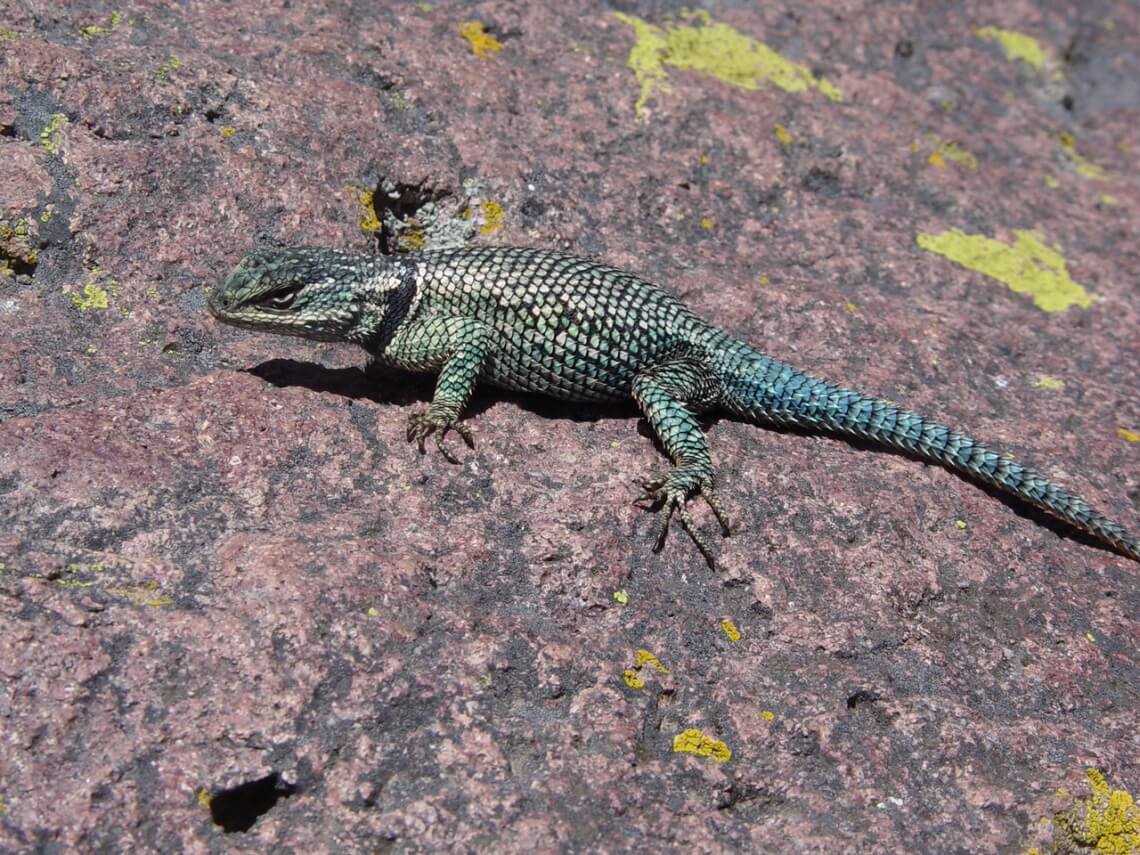TUCSON, Ariz. — Climate change can be a contentious topic, and many remain unconvinced that it’s really taking place. However, new research focusing on one lizard species in Southeastern Arizona is revealing shocking evidence of a rapid acceleration in climate change-driven extinction. Specifically, researchers discovered 70 years’ worth of climate damage in just seven years!
Researchers at the University of Arizona surveyed populations of the Yarrow’s spiny lizard in 18 mountain ranges in the state, analyzing the rate of climate-related extinction over time.
“The magnitude of extinction we found over the past seven years was similar to that seen in other studies that spanned almost 70 years,” says John J. Wiens, a professor in the Department of Ecology and Evolutionary Biology and the senior author of the study, in a university release.
The Yarrow’s spiny lizard is native to the southwestern United States (and western Mexico) and can be spotted in oak and pine forests across 18 of Arizona’s Sky Islands mountain ranges.

To start, the research team carried out a series of initial surveys of the Yarrow’s spiny lizard in these mountain ranges between 2014 and 2015. Then, in 2021 and 2022, Prof. Wiens, along with Kim Holzmann, his former master’s student and the lead author of the study, and Ramona Walls, a part-time researcher at UArizona’s BIO5 institute, collaborated to resurvey those areas and investigate if any changes in the lizard populations had developed since then.
While conducting the surveys, study authors discovered roughly half of the lizard populations at lower elevations had disappeared. This was likely due to temperatures turning warmer at lower elevations, with lizards living nearby presumably not being able to tolerate more heat. Loss of low-elevation populations is a signature pattern of climate change, researchers say.
“The rate of extinction in such a short time period was shocking,” Prof. Wiens adds.
After comparing their work to historical records from the same mountain ranges, researchers estimate the average extinction rate of the lizard populations at low elevations has tripled over just the past seven years, relative to the prior 42 years.
While earlier projects have indeed predicted that climate-related extinctions will increase as global warming continues, Prof. Wiens notes that he hasn’t seen any report showing such a rapid acceleration of extinction occurring previously. Even worse, the study adds that a distinct 3-million-year-old lineage of the Yarrow’s spiny lizard from the Mule Mountains (near Bisbee) may be entirely extinct as soon as 2025.
“The low-elevation populations in the Mules were fine in 2014. Now the only ones that we have found left were within about 300 feet of the top of the mountain in 2022, and they appear to have been losing about 170 feet per year,” the researcher explains.
It’s important to clarify that not all low-elevation populations went extinct between the surveys. For instance, researchers note two populations occurring at very low elevations survived. Before their disappearance, the research group collected genomic data from most lizard populations between 2014 and 2015. Access to this data allowed researchers to conclude that lizard populations that were less genetically distinct and exposed to greater climate change effects were the ones that tended to go extinct in most cases, suggesting that populations with less genetic variation have less capacity to cope with climate change.
Moving forward, Prof. Wiens’ research group wants to conduct further studies focused on the extinction and survival mechanisms of the Yarrow’s spiny lizards living in these mountain ranges. Researchers are also planning on putting together similar projects with other lizard species native to even hotter areas like California’s Death Valley.
Study authors stress the importance of studying climate change’s influence on biodiversity across shorter timescales, as opposed to only looking for changes after decades have passed.
“We’ve shown now that there can be devastating climate change effects over very short time periods,” Professor Wiens concludes.
The study is published in the journal Ecology Letters.
You might also be interested in:
- Biologists say mass extinction event is accelerating: More than 500 species could disappear by 2040
- Broccoli going extinct? Scientists reveal why global warming turns it into cauliflower
- Marine biodiversity faces dinosaur-like mass extinction due to climate change, study warns


Well, at least it’s not TOTALLY our fault.